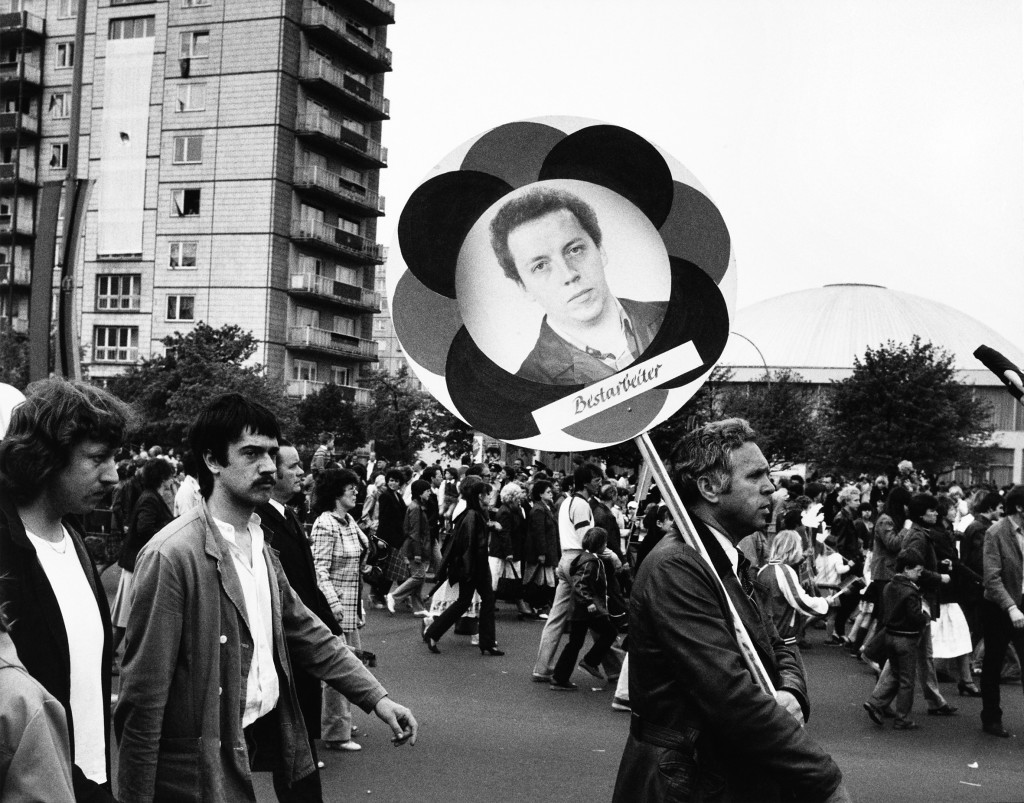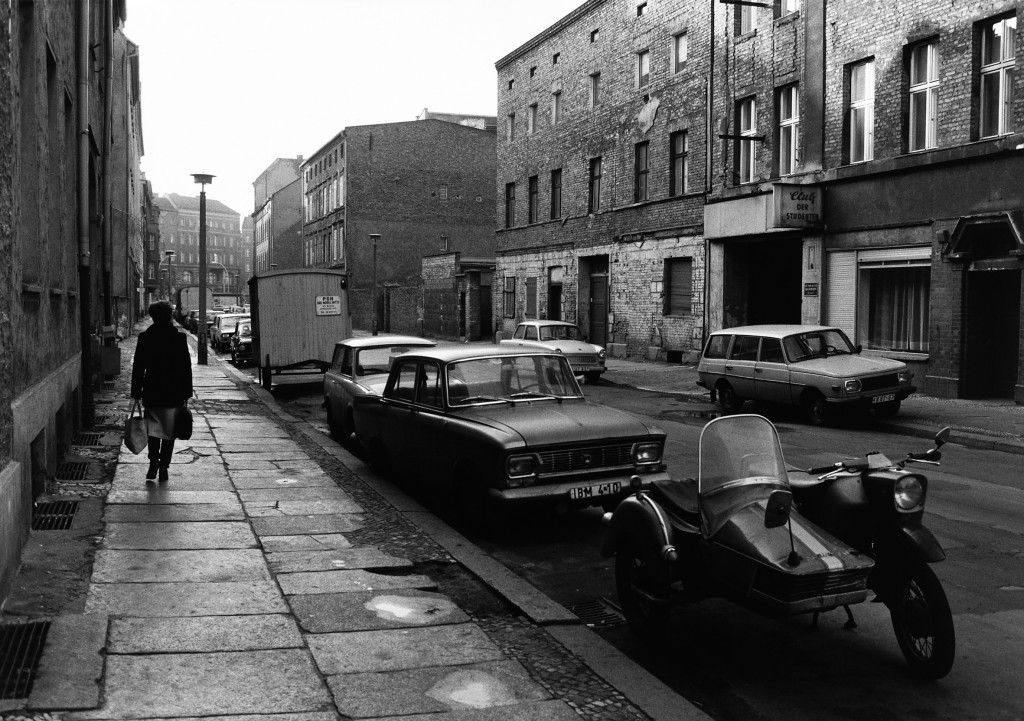Location: Ex-Cavallerizza, Piazzale Giuseppe Verdi.
EST-BERLIN — UDO HESSE
curated by Markus Hartmann
In 1981 West-Berlin based photographer Udo Hesse started to visit regularly East-Berlin (in the Soviet Occupation Zone), the other part of the divided city of Berlin. His idea was to document the former center of Berlin, “Berlin Mitte”, which was located behind the Berlin Wall in East-Berlin, and to publish a photobook with those photographs.
To cross the border was again and again an uncomfortable procedure, because of the unpleasant rather indiscreet border controls. The controls were time consuming and included a compulsory exchange of 25 West Mark to East Mark at a rate of 1:1. This money had to be spent within East-Berlin, during the maximum stay of 24 hours. One could not keep any East Mark, when leaving East-Berlin.
From 1981 to 1983 Hesse photographed everyday life in the streets and special occasions like the parades on May 1st. For him it was like visiting a country which seemed familiar, but at the same time constantly alienating and almost exotic. The public events followed rules that were difficult to understand and meetings only took place person to person, face to face.
He was arrested on March 9th 1982 by the Volkspolizei (people’s police). He had photographed the wall and the viewing platform in the West from Schwedterstrasse. All of his photographic material was confiscated during the arrest. Throughout the course of the interrogation the officials became more friendly and he was asked for another meeting in two weeks time. It was obvious that the Stasi was interested in him. However, he did not respond to this request. It was only after applying to the Federal Commissioner for the Stasi Archives in 2007 that Hesse received a 40 page copy of his Stasi file – inside were copies of the forbidden photographs from March 9th 1982. From the five films originally confiscated he received seven of the original negatives back. The rest of the material was untraceable. It became clear from his file that the Stasi had planned in detail his recruitment as a nonofficial collaborator and therfore asked for more meetings.






